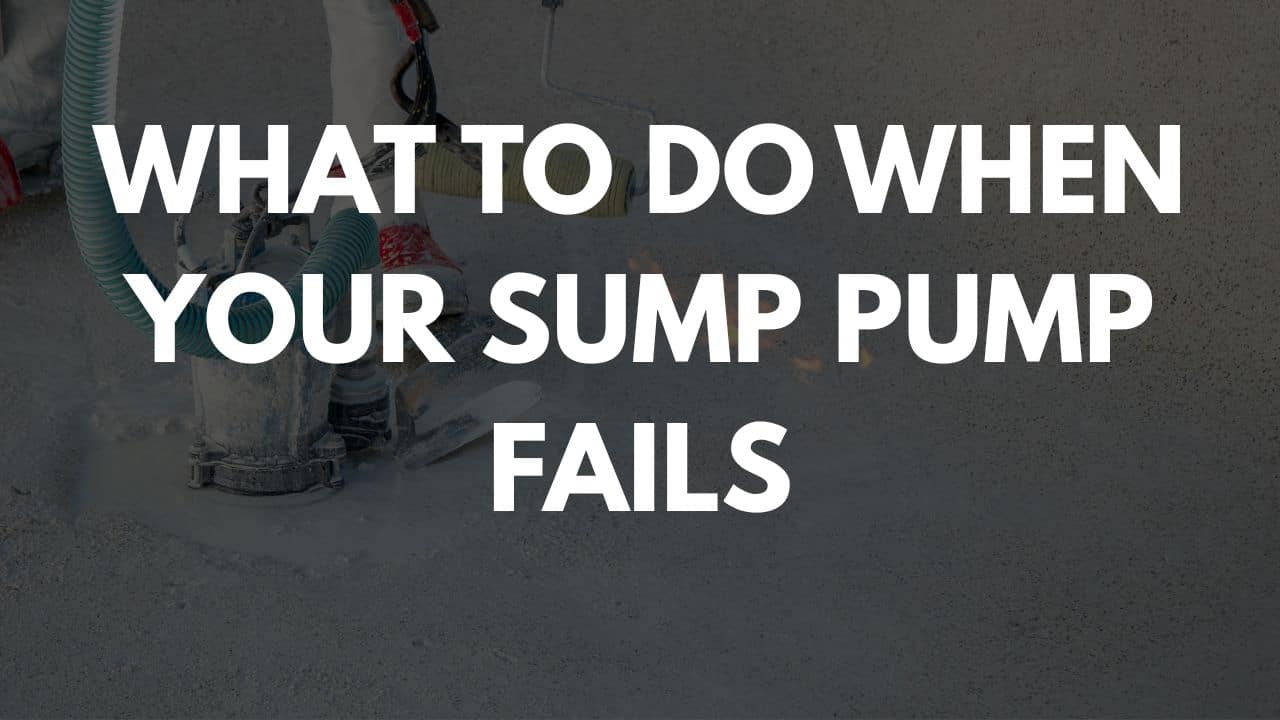
What to Do When Your Sump Pump Fails (And How to Minimize Water Damage)
If you’ve ever walked into your basement during a heavy rain and heard silence where a sump pump should be humming, you know the feeling. It’s panic. It’s frustration. And it’s the beginning of a race against water damage.
As someone who’s helped more than a few homeowners deal with flooded basements, I’ve put together this real-world guide to handling sump pump failure fast and smart—so you can protect your home (and sanity).
⚡️ Step 1: Stay Calm and Stay Safe
Water and electricity do not mix. Before you do anything:
- Turn off power to the sump pump circuit at the breaker.
- Avoid standing in deep water until you know it’s safe.
- Wear rubber boots if there’s more than an inch of water.
If you’re not comfortable assessing electrical safety, wait for a pro.
📃 Step 2: Identify the Cause of the Failure
Start by figuring out why your sump pump failed. Here are common causes:
- Power outage
- Float switch stuck or broken
- Clogged discharge line
- Pump burnt out or overheated
- Blown fuse or tripped GFCI outlet
- Frozen or blocked check valve
Sometimes it’s something simple (like a flipped breaker). Other times the pump is toast.
Quick test: Pour a bucket of water into the pit. If nothing happens, it’s time to move to the next step.
🚰 Step 3: Remove Water to Minimize Damage
If the pump is dead and water is rising, you need to act fast:
✅ Use a Wet/Dry Vac
- Most shop vacs can hold 5–20 gallons of water.
- Empty it frequently—have a dumping spot ready (like a basement drain or out the door).
✅ Use a Utility Pump
- These plug into a regular outlet and pump water through a garden hose.
- Available at most hardware stores or tool rental centers.
✅ Bail Water by Hand (if needed)
- Not ideal, but it works in a pinch. Use buckets, sponges, towels—whatever it takes.
🧹 Step 4: Dry Things Out Fast
Water sitting for more than 24–48 hours can lead to mold. Once you’ve stopped the incoming water:
- Set up fans and open windows (if weather allows)
- Use a dehumidifier to pull moisture out of the air
- Remove wet items (carpet, cardboard, drywall)
Act like you’re racing the clock—because you are.
🔧 Step 5: Replace or Repair the Pump
Once the emergency is under control, it’s time to fix the root issue.
- If it’s just a stuck float, clean and test it.
- If the motor is dead, replace the pump.
- Consider upgrading to a submersible unit or one with a better float system.
- Add a check valve if you don’t already have one.
If your pump failed due to a power outage, you may want to install a battery backup system next.
🏡 Bonus: Prevent Future Flooding
✅ Add a Backup System
- Battery backup pumps can run for hours even if the power is out.
- Water-powered systems are an option if you have high water pressure.
✅ Install a Water Alarm
- These cost under $20 and alert you when water hits the floor.
✅ Maintain Your Pump Quarterly
- Test it with a bucket of water
- Clear debris from the pit
- Inspect the float and discharge line
✅ Redirect Downspouts
- Make sure gutters and drains send water far from your foundation.
🤔 FAQ: Emergency Sump Pump Failure
Q: Can I call a plumber for a broken sump pump?
A: Absolutely. Many plumbers and basement waterproofing pros handle pump replacements.
Q: My power is out and my basement is flooding. What can I do?
A: Use a battery-powered utility pump, wet vac, or hand bail. Once power is back, consider installing a backup system.
Q: Will my homeowners insurance cover the damage?
A: Maybe. Some policies require a sump pump rider for water backup coverage. Check your policy.
Q: How much does it cost to replace a sump pump?
A: Typically $200–$600 for the pump and basic install. Add more for backup systems.
Q: How fast does mold start after a flood?
A: Mold can start forming in as little as 24 hours. Dry everything out as quickly as possible.
Sump pump failure doesn’t have to mean disaster. The key is fast action, smart tools, and a solid recovery plan. If you’ve had a close call or want to prep your basement better, I’m happy to help. Let’s make sure next time, the pump works—or there’s a backup ready to go.




No Comments
Sorry, the comment form is closed at this time.